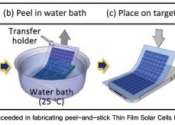New type of nanosensor detects DNA building blocks
Researchers at Uppsala University and in Brazil have developed a new type of nanosensor that can detect single molecules. The nanosensor, comprising a combination of two different materials, has been used to identify the ...








